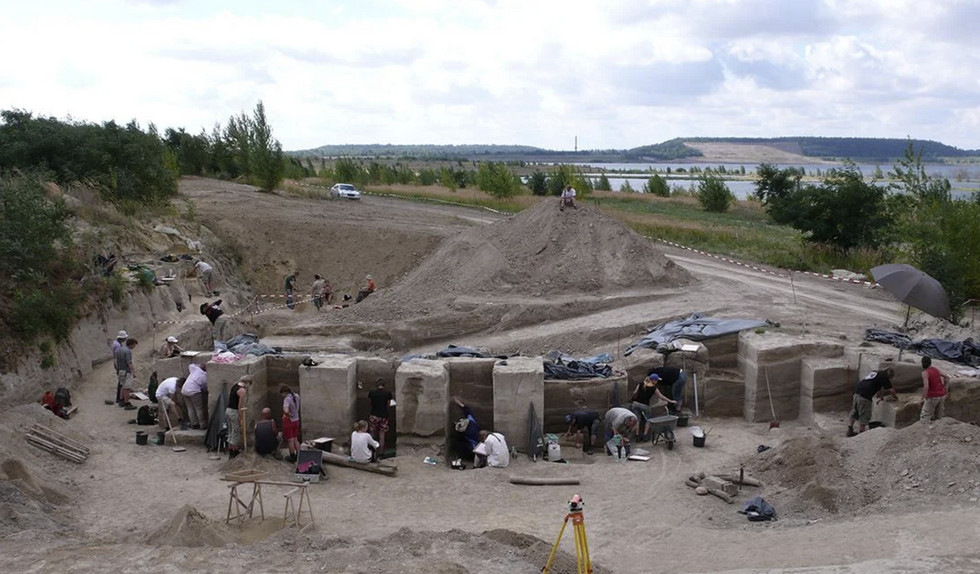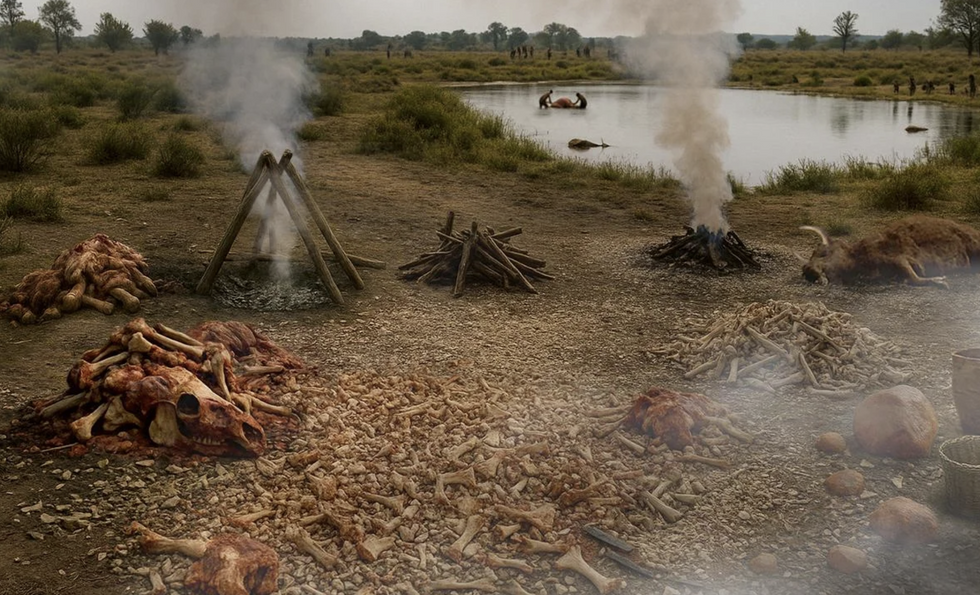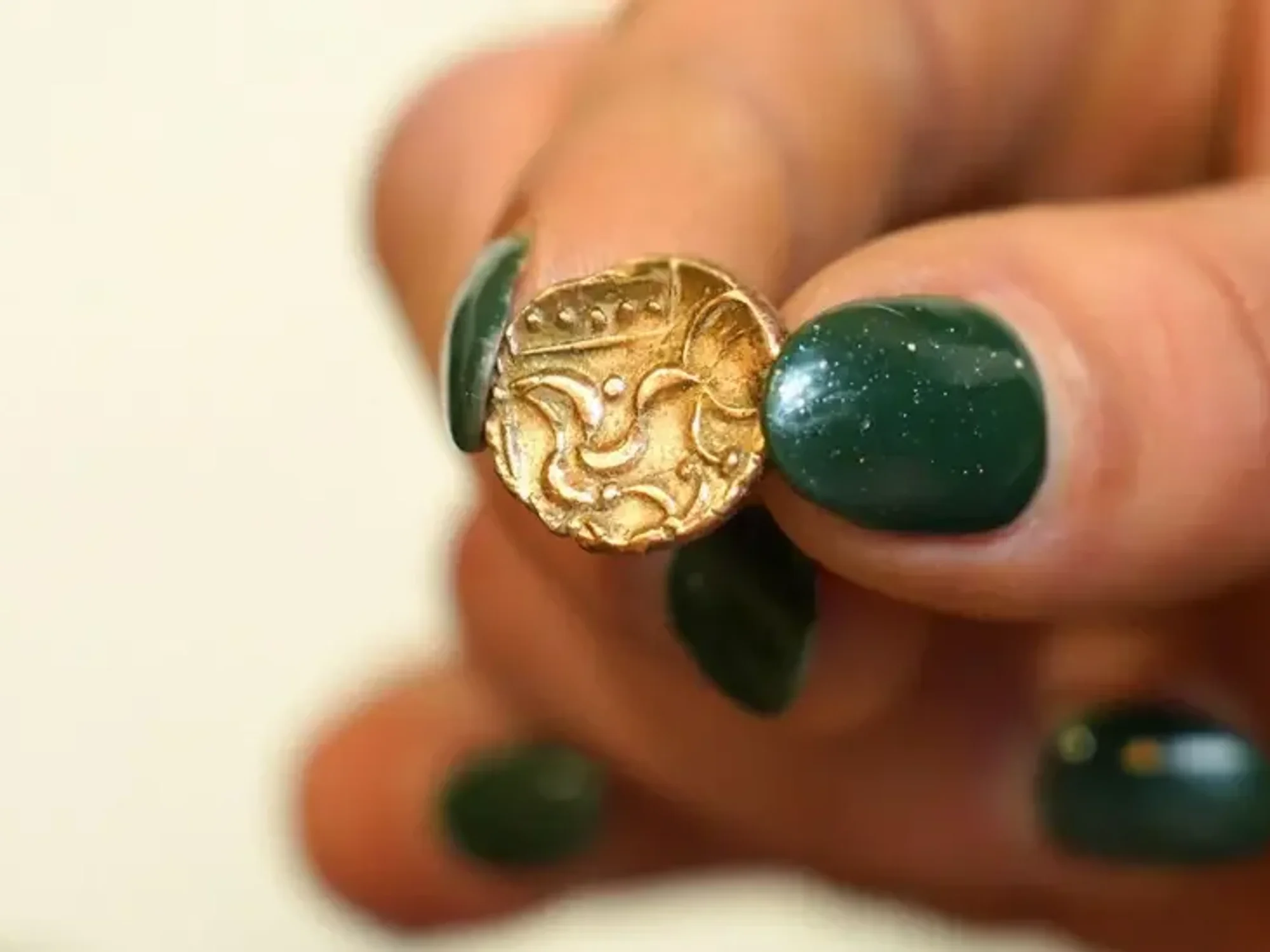Archaeology breakthrough as 125,000-year-old pre-historic 'fat factory' discovered on lakeshore

The discovery at the German site could upend understanding of Neanderthal practices
Don't Miss
Most Read
Latest
Archaeologists have uncovered evidence of a 125,000-year-old "fat factory" at a German lakeshore site.
The discovery at Neumark-Nord 2 in central Germany reveals that Neanderthals employed an advanced food preparation technique, using water and heat to strip fat from the bones of large animals.
International researchers found that these early humans crushed bones into fragments and boiled them to obtain bone grease, a nutrient-rich resource.
This method went beyond simply smashing bones to access marrow, a practice shared with their earliest African ancestors.

Researchers working at the 'Neumark-Nord 2' site in central Germany
|WIL ROEBROEKS/LEIDEN UNIVERSITY
The findings suggest Neanderthals possessed a far more sophisticated understanding of nutrition and resource management than previously thought.
The research, published in Science Advances, was conducted by teams from MONREPOS (Leibniz Centre for Archaeology), Leiden University in the Netherlands, the University of Reading and the State Office for Heritage Management and Archaeology of Saxony-Anhalt.
"This was intensive, organized, and strategic," said Dr Lutz Kindler, the study's lead author. "Neanderthals were clearly managing resources with caution, planning hunts, transporting carcasses, and rendering fat in a task-specific area. They understood both the nutritional value of fat and how to access it efficiently."
The production of bone grease, which required substantial quantities of bone to be worthwhile, was previously thought to be exclusive to Upper Paleolithic modern humans.
This discovery pushes back the timeline by thousands of years and fundamentally shifts understanding of Neanderthal dietary practices and adaptation.
LATEST DEVELOPMENTS

An artist's rendition of the site
|SCHERJON/LEIZA-MONREPOS
At least 172 large mammals, including deer, horses and aurochs, were butchered at the site. The Neumark-Nord complex, discovered in the 1980s by archaeologist Dietrich Mania, represents a complete interglacial ecosystem.
Excavations between 2004 and 2009 revealed distinct zones for different Neanderthal activities.
One area was used for deer hunting and light butchering, another for processing straight-tusked elephants, and a third specialised area for fat removal.
Cut-marked remains of 76 rhinos and 40 elephants were also discovered at nearby sites such as Taubach. The preservation of the entire landscape provides unprecedented insight into the range of Neanderthal behaviours within a single environment.
"What makes Neumark-Nord so exceptional is the preservation of an entire landscape, not just a single site," said Leiden University's Professor Wil Roebroeks. "We are seeing a range of Neanderthal behaviors within the same landscape."
The activities at Neumark-Nord likely had significant long-term environmental consequences.
Professor Roebroeks warned that mass hunting of slow-reproducing species would have substantially impacted fauna in the region during the Last Interglacial period.
The discoveries challenge long-held stereotypes of Neanderthals as brutish cavemen.
The "fat factory" at Neumark-Nord reveals a species capable of planning for the future, managing their environment, and maximising nutrition in resource-poor conditions.











